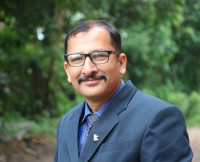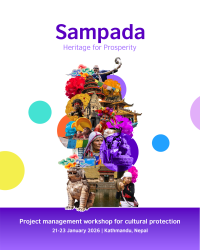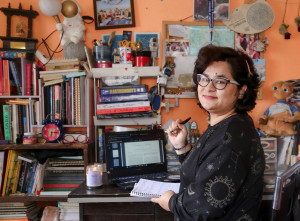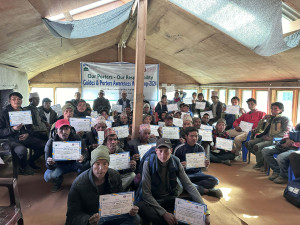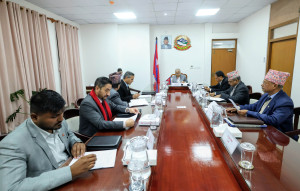Culture & Lifestyle
How one temple turned Itahari into a pilgrimage destination
Shree Krishna Pranami Temple, built in 1978 and rebuilt in 2018, boasts grand architecture. It blends artistry and cultural elegance as a key pilgrimage and community centre.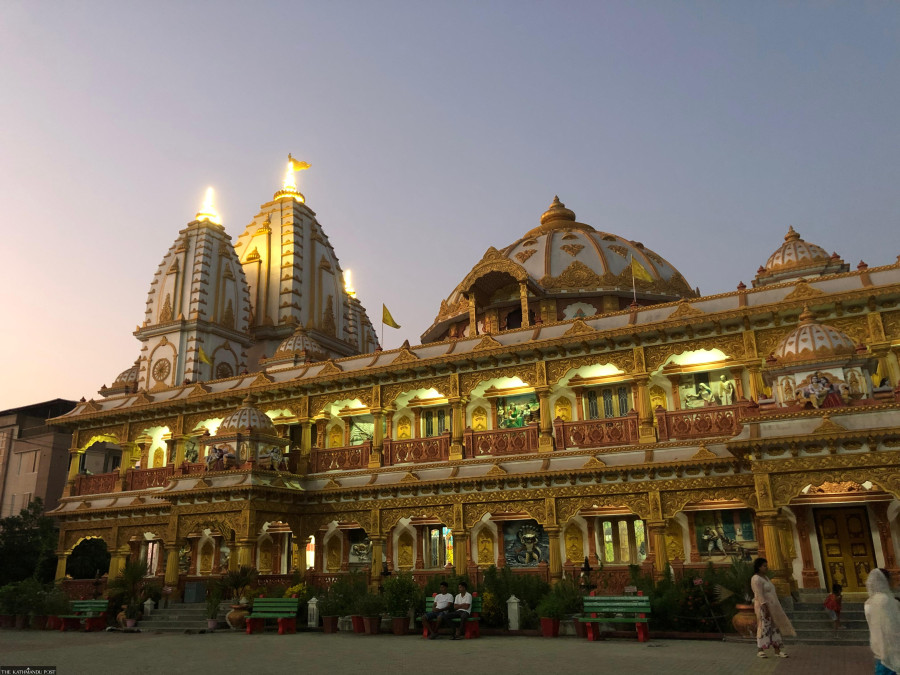
Sanskriti Pokharel
Shree Krishna Pranami Temple in Itahari is one of the revered pilgrimage sites in eastern Nepal. Established in 1978, it sits on the western bank of the Budhiganga-Jamuna River, at the border of Itahari Sub-Metropolitan City and Sundarharaicha Municipality in Koshi Province. For decades, it has drawn devotees from across the country not only for worship but also for its reputation as a centre of service, discipline, and community life.
The temple traces its roots to the spiritual commitment of the late Guruji Shree 108 Mangaldas Ji Maharaj, whose years of renunciation and penance laid its foundation. In 2018, the temple underwent large-scale reconstruction and beautification. The then-President of Nepal, Bidya Devi Bhandari, inaugurated the renovated temple. Today, the temple has become one of the region’s most visually striking religious structures.
Before the reconstruction, the structure was modest and plain. It served its purpose as a place of worship but lacked elaborate detailing. The current building, however, presents a striking change. Its architecture combines traditional symbolism with ornamental craftsmanship.
A tall shikhara rises prominently on one side of the temple, while several rounded domes stretch across the roofline. Each dome carries a golden finial. Beneath every dome sits an idol of Radha and Krishna together. The domes’ varied shapes and the shikhara’s height create a layered and splendid skyline visible from afar.
The temple is painted in white and gold. White reflects purity, while gold highlights the borders, carvings and cornices. The contrast creates an appearance that is both serene and regal.
The structure is rich in carvings. Every outer wall section features relief patterns, floral motifs and ornamental lattice work. The columns are thick, carved and polished. The arches curve smoothly, framing the entrance points and windows. The style resembles Rajasthani and Mughal architecture, which are known for their intricate detailing and balanced symmetry.
Several stone panels are built into the walls. These depict stories from Krishna's life. Some show his birth, while others illustrate his playful childhood deeds, raasleela, and philosophical teachings. These carvings serve as decoration and narrative guides for visitors who pause to view and reflect.
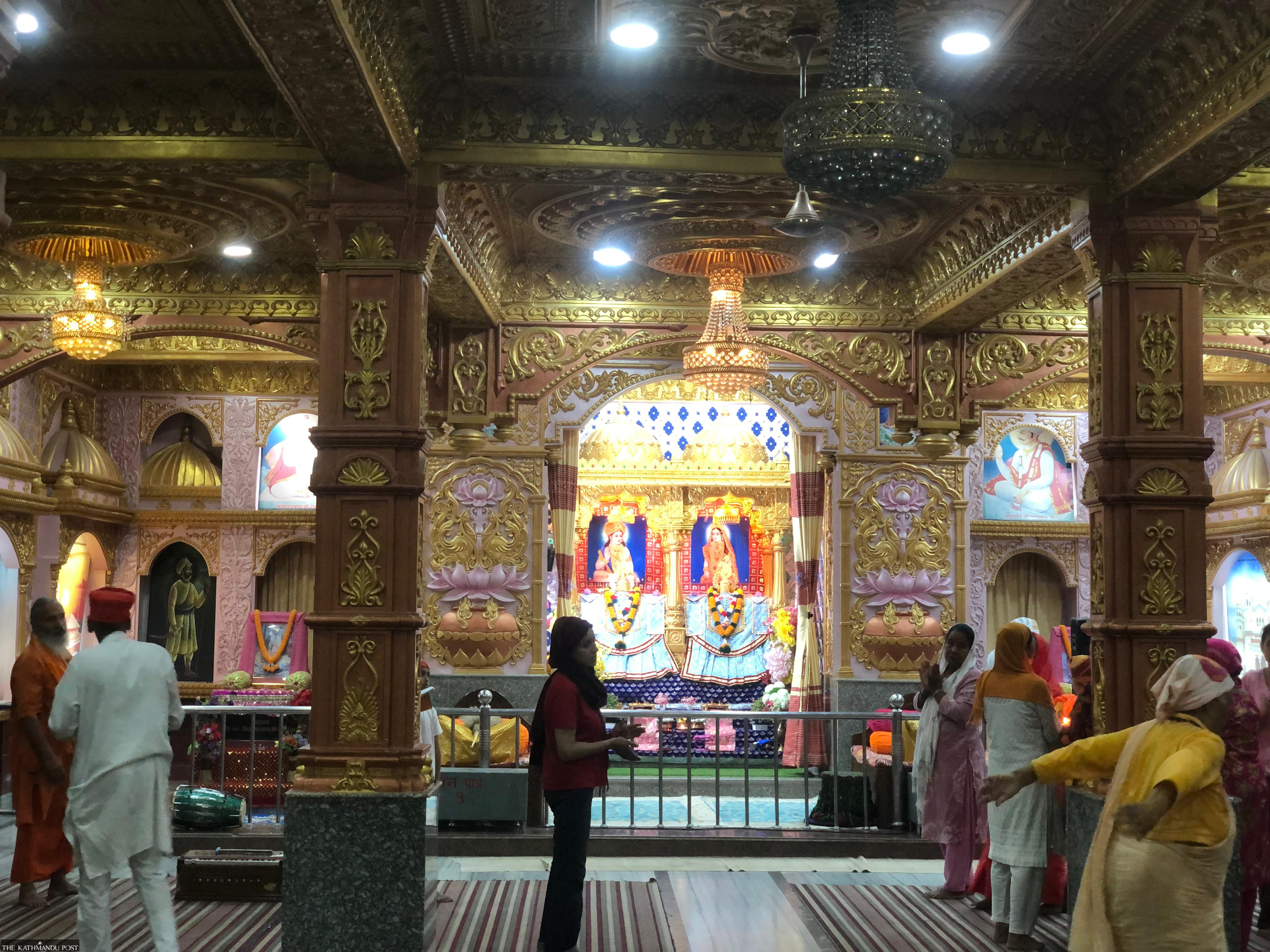
A large courtyard stretches wide in front of the main building. It is open and calm, with benches placed at intervals. Potted plants border the walkways. The space is used for gatherings, prayer sessions, and quiet meditation. In the early mornings, elderly devotees often sit here for breathing exercises, while groups assemble for bhajans in the evenings.
Despite the visual changes brought by reconstruction, the temple’s purpose remains steadfast. It continues to function as a spiritual home and social institution. The core objective of its establishment was to promote moral values, encourage religious harmony, and guide individuals toward self-awareness and moksha. Its teachings emphasise the liberation of the soul through discipline, empathy, and service.
According to Hem Prasad Ghimire, chairman of Muktidham Area Development Committee, the institution has consistently provided shelter and care to elderly individuals who seek refuge under its protection. The temple has provided food, medical support and companionship to senior citizens living here under spiritual shelter. It has also arranged education, meals and healthcare for orphaned and helpless children. Monks and sages from Nepal or abroad are regularly welcomed and hosted here.
The temple premises remain active throughout the year. Recitation sessions, devotional singing, music practice, and yoga training are held daily or weekly. Special emphasis is placed on the teachings of the Prannath Vani, the central scripture of the Krishna Pranami tradition. Training programmes based on this scripture have produced disciplined individuals who work across Nepal and foreign countries as social workers, spiritual instructors, or community leaders.
Looking ahead, the institution has outlined several development plans under the supervision of the Shree Krishna Pranami Mandir Management Committee of Itahari. According to the temple documents, one of the major plans is to construct statues of various deities along a designated path starting from the bank of the Budhi-Yamuna River to the eastern side of the temple. The aim is to create an open heritage corridor where pilgrims can walk, observe, and offer prayers to different deities in sequence.
The committee also plans to establish a school that will provide education from the primary to higher levels. A library and clinic are also proposed to offer reading resources and basic healthcare. The upcoming projects will also include the construction of an old-age home and a guesthouse.
These efforts will support environmental care and moral development. Devotees from Nepal and abroad have continued to contribute financially and materially. Once the planned structures are complete, this site will emerge as a national-level pilgrimage centre, inspiring devotion and ethical living.
The Budhiganga-Jamuna Muktighat, located next to the temple along the riverbank, has further strengthened the significance of this area. Built in 2013, it was inaugurated by then Prime Minister Sushil Koirala. The cremation site is known for its clean surroundings and organised system. Unlike many riverbank cremation areas across Nepal, this one is paved correctly, maintained and monitored.
Many people visit Itahari to see the temple and the Muktighat every year. As a result, the locality has gradually evolved into a religious and cultural tourism hub.
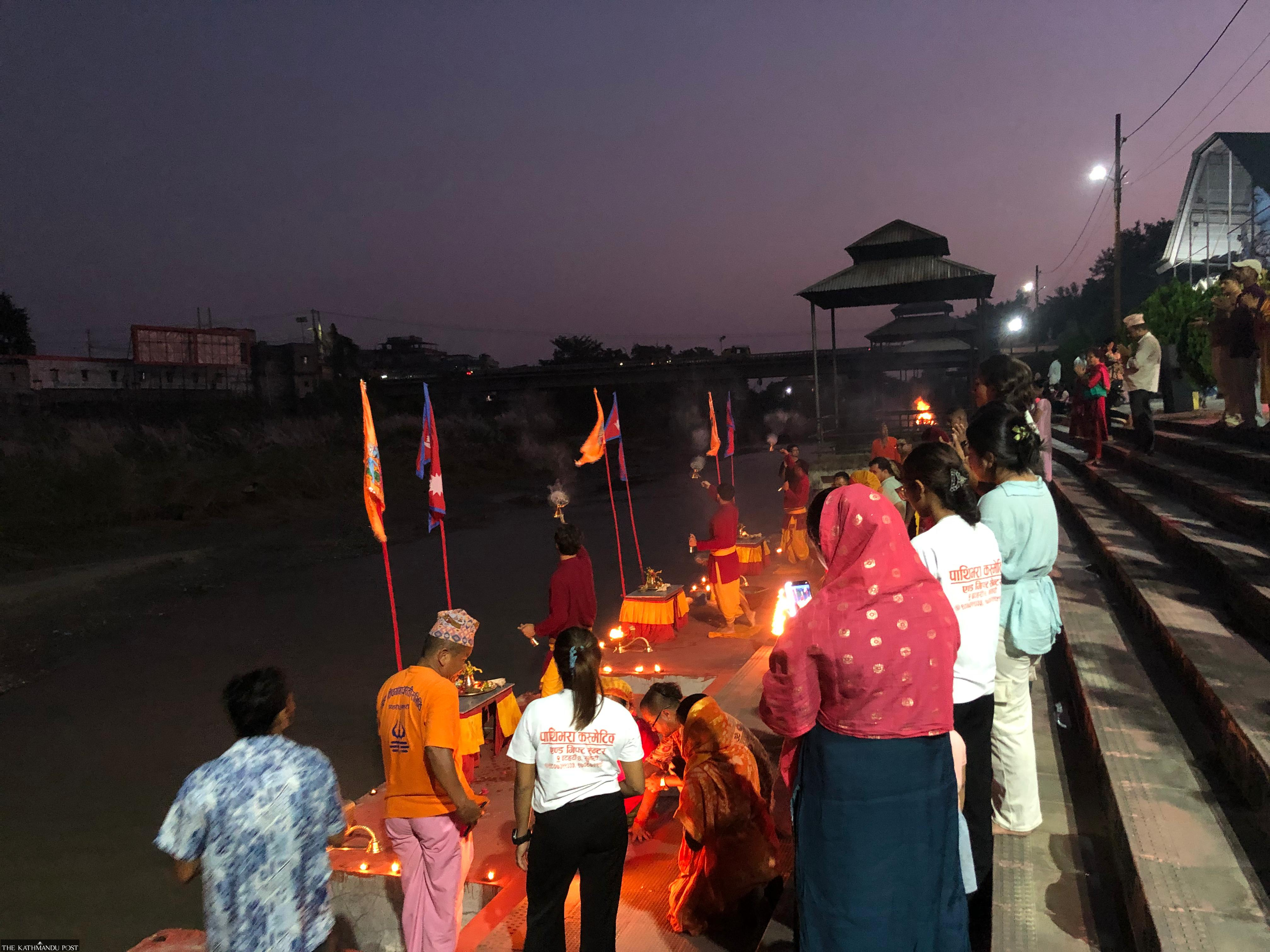
Under the Religious Department, the temple conducts programmes through its Muktidham Management Committee and 13 branch committees. Krishna Janmashtami is celebrated with grandeur. Devotees from Itahari, Dharan, Biratnagar, and surrounding areas gather during the festival. Children dressed as Krishna and Radha take part in plays and dance performances. Thousands join the evening aarti.
Apart from major festivals, routine practices continue daily. Prayer rituals are conducted every day. Scripture readings take place in the morning. Evenings are filled with bhajans. Offerings are made in the sanctum while priests conduct ceremonial rituals.
The temple sustains its operations through regular donations from locals and visiting devotees. According to Ghimire, they receive financial support from individuals who offer cash or materials. Festivals, gatherings and donation boxes also contribute.
Shree Krishna Pranami Temple today is not only a symbol of faith for Itahari but also a centre of service and discipline. Its architecture attracts the eye, while its activities touch the heart. In a time when many religious institutions focus solely on ritual, this temple continues to combine worship with social responsibility.




 16.12°C Kathmandu
16.12°C Kathmandu
